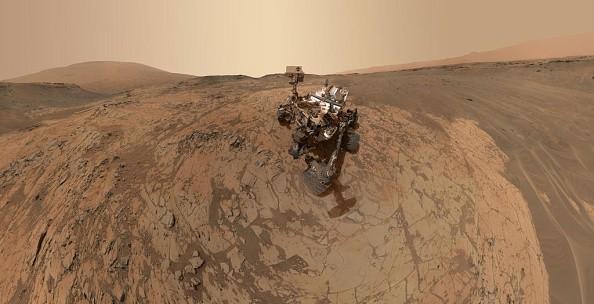
Humanity has long been fascinated with its close neighbor, Mars. For centuries, there have been many theories about the red planet. In fact in the 19th century, it is commonly believed that an intelligent civilization lives on the planet. At the time, Percival Lowell, an American businessman and astronomer, made the idea of artificial Martian canals popular.
More recently in 2012, NASA launched a car-sized robotic rover dubbed "Curiosity" in the surface of Mars. The rover has since went on to be one the more popular projects for the space agency and it seems like the robot is not yet done captivating scientists and civilians alike.
Last January 19, 2016, the Curiosity Rover sent out a composite of photographs of itself by Mars' Namib Dune. The images were collected as part of the Rover's current mission of studying the Red Planet's sand dunes in order to attain information about these formations in an atmosphere different from Earth's.
"The mission's examination of active sand dunes -- the first ever studied up close other than on Earth -- is providing information about active dune processes in conditions with much less atmosphere and less gravity than on Earth. Researchers are evaluating possible sites for the next use of Curiosity's drill to collect rock-powder samples of the bedrock in the area" explained NASA in a recent statement.
This is not the first time the Curiosity Rover took a picture of itself in Mars. In celebration of being on the planet for one full Martian year or a total of 687 Earth days, the robot took a "selfie" with the Mars Hand Lens Imager it is equipped with. More recently in August of last year, the Curiosity snapped a composite of 92 photographs of itself after drilling a rock on a hill in Mount Sharp - which is its last destination.
View the photographs here.



